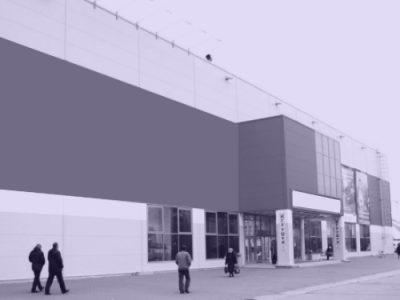Perfect Store - Enhancing Customer Experience and Maximizing Sales
Our Clients
Committing to the success of our clients around the world
In the dynamic world of retail, the concept of the “Perfect Store” has emerged as a transformative strategy that aims to maximize sales, enhance customer satisfaction, and optimize store operations. This article delves into the elements that constitute a perfect store, the benefits it brings, and how retailers can implement this concept to stay competitive and relevant in today’s fast-paced market.
What is a Perfect Store?
A Perfect Store is a retail philosophy that integrates all aspects of the marketing mix effectively at the point of sale (POS) to create an ideal shopping environment for customers. It encompasses everything from product placement, staff training, and promotional strategies to the overall store layout and design. The ultimate goal is to create a seamless and pleasant shopping experience that not only meets but exceeds customer expectations.
Key Elements of a Perfect Store

- Strategic Store Design and Layout: The design and layout of the store are crucial in guiding customer flow and enhancing product visibility. Effective use of space, logical product placement, and clear signage help customers navigate the store effortlessly, leading to increased satisfaction and sales.
- Optimal Product Assortment and Availability: Ensuring that the right products are available at the right time is fundamental. This includes efficient inventory management to prevent stock-outs and having a curated product assortment that caters to the local demographic’s preferences.
- Engaging and Effective Merchandising: Merchandising plays a key role in the Perfect Store. This involves the strategic placement of products to capture customer interest and encourage purchases. It also includes the use of promotional displays and seasonal setups that align with consumer trends.
- Dynamic Pricing and Promotions: Competitive pricing strategies and attractive promotions are essential. They not only draw customers into the store but also provide them with value, which can lead to increased loyalty and repeat visits.
- Trained and Knowledgeable Staff: The staff should be well-trained not only in customer service but also in product knowledge. A knowledgeable team can provide invaluable assistance and advice to shoppers, enhancing the overall customer experience.
- Technology Integration: Utilizing the latest retail technologies can streamline operations and improve customer interactions. This includes everything from CRM systems for personalized marketing to advanced POS systems that expedite the checkout process.
- Measuring Success with Analytics: Implementing tools to track performance and customer satisfaction helps in refining the Perfect Store strategy. Analytics can provide insights into which areas are performing well and which need improvement, allowing for data-driven decision-making.

Maximize your store’s potential with Ailet’s Perfect Store execution. Get real-time insights, streamline operations, and achieve retail excellence. Get started now!
Benefits of Implementing the Perfect Store Concept
- Increased Sales: By optimizing the retail environment, stores can see a marked increase in sales volumes and profitability.
- Enhanced Customer Loyalty: A positive shopping experience can convert casual visitors into loyal customers, reducing churn and increasing lifetime value.
- Operational Efficiency: Streamlined processes and improved organization within a store can significantly reduce costs and enhance staff productivity.
- Brand Differentiation: Establishing a store as a ‘perfect’ shopping destination can set a brand apart from competitors, attracting more customers.

Steps to Achieving the Perfect Store
- Assessment and Planning: Evaluate current practices and identify areas for improvement. This involves detailed analysis of customer feedback, sales data, and market trends.
- Training and Development: Invest in staff training to ensure that all employees are aligned with the store’s goals and equipped with the skills needed to enhance customer experiences.
- Implement Technology Solutions: Adopt suitable technologies that aid in better inventory management, customer relationship management, and overall store operations.
- Continuous Improvement: Regularly review performance metrics and make adjustments to the strategy as needed. This includes staying updated with new retail trends and technologies.

The Perfect Store concept is not just about physical improvements but also about creating a culture of excellence that resonates throughout the customer’s journey. By focusing on the key elements that impact customer interaction and satisfaction, retailers can significantly enhance their store’s appeal and performance.
Contact us
Success Stories
 Allis
Allis
 Coca Cola
Coca Cola
 Perfetti Van Melle
Perfetti Van Melle
 Nestle
Nestle
 Danone
Danone
 Mars
Mars
 Tarweej
Tarweej
 TOP 3 Retail Chain
TOP 3 Retail Chain
 Global Retail Corporation
Global Retail Corporation
 World’s Leading Manufacturer
World’s Leading Manufacturer
 Global FMCG Brand
Global FMCG Brand
 Leading Food Manufacturer
Leading Food Manufacturer
 Global Food Manufacturer
Global Food Manufacturer
 Global Coffee Manufacturer
Global Coffee Manufacturer
 Major Spirits Producer
Major Spirits Producer
 Global Pharmaceutical Brand
Global Pharmaceutical Brand
 Leading Food Manufacturer
Leading Food Manufacturer
 Global FMCG Brand
Global FMCG Brand
 Leading Food Manufacturer
Leading Food Manufacturer
 Leading Spirits Producer
Leading Spirits Producer
 Major FMCG Brand
Major FMCG Brand
 Major Coffee & Tea Manufacturer
Major Coffee & Tea Manufacturer



















